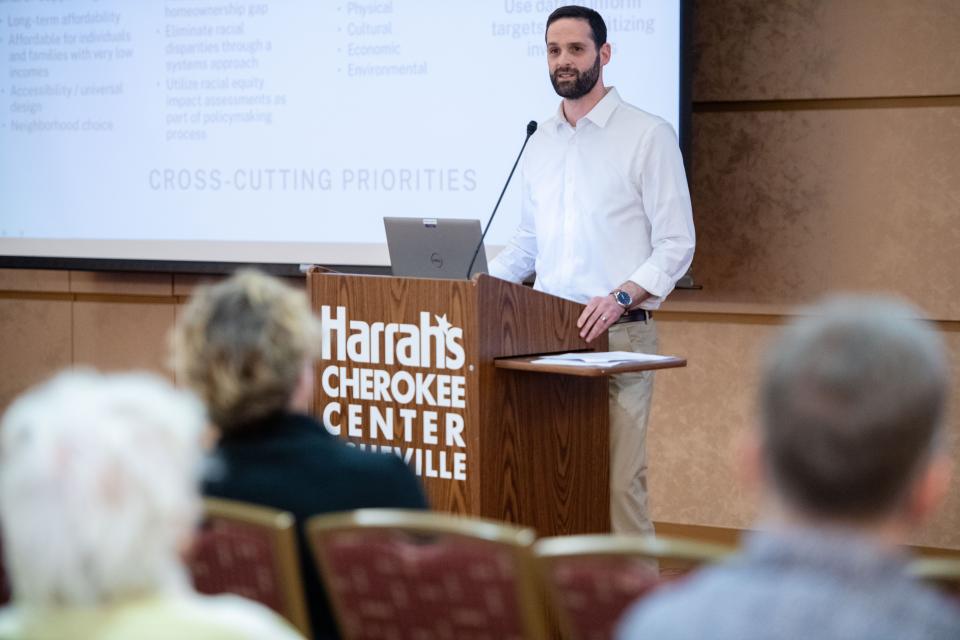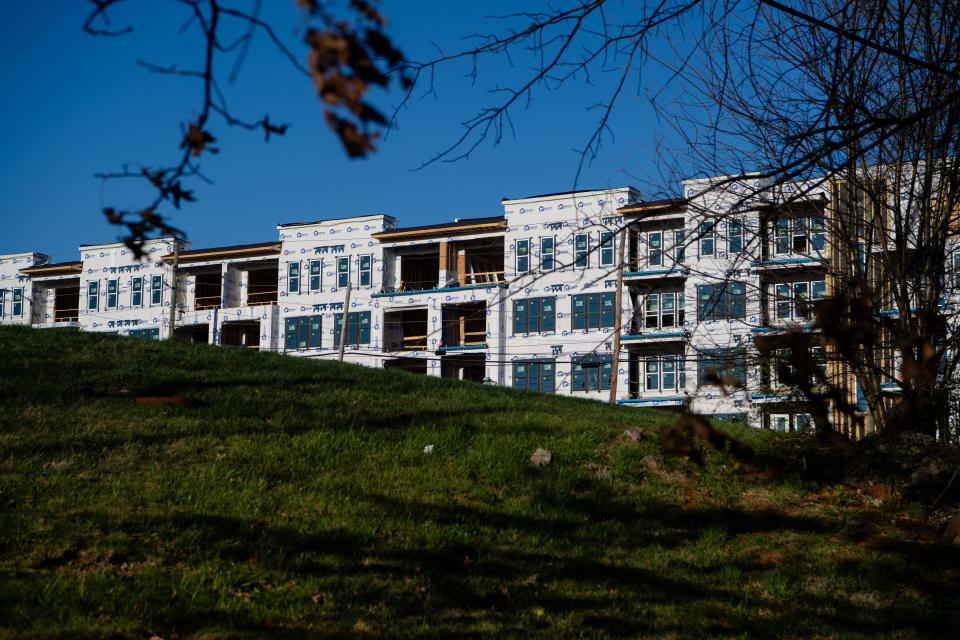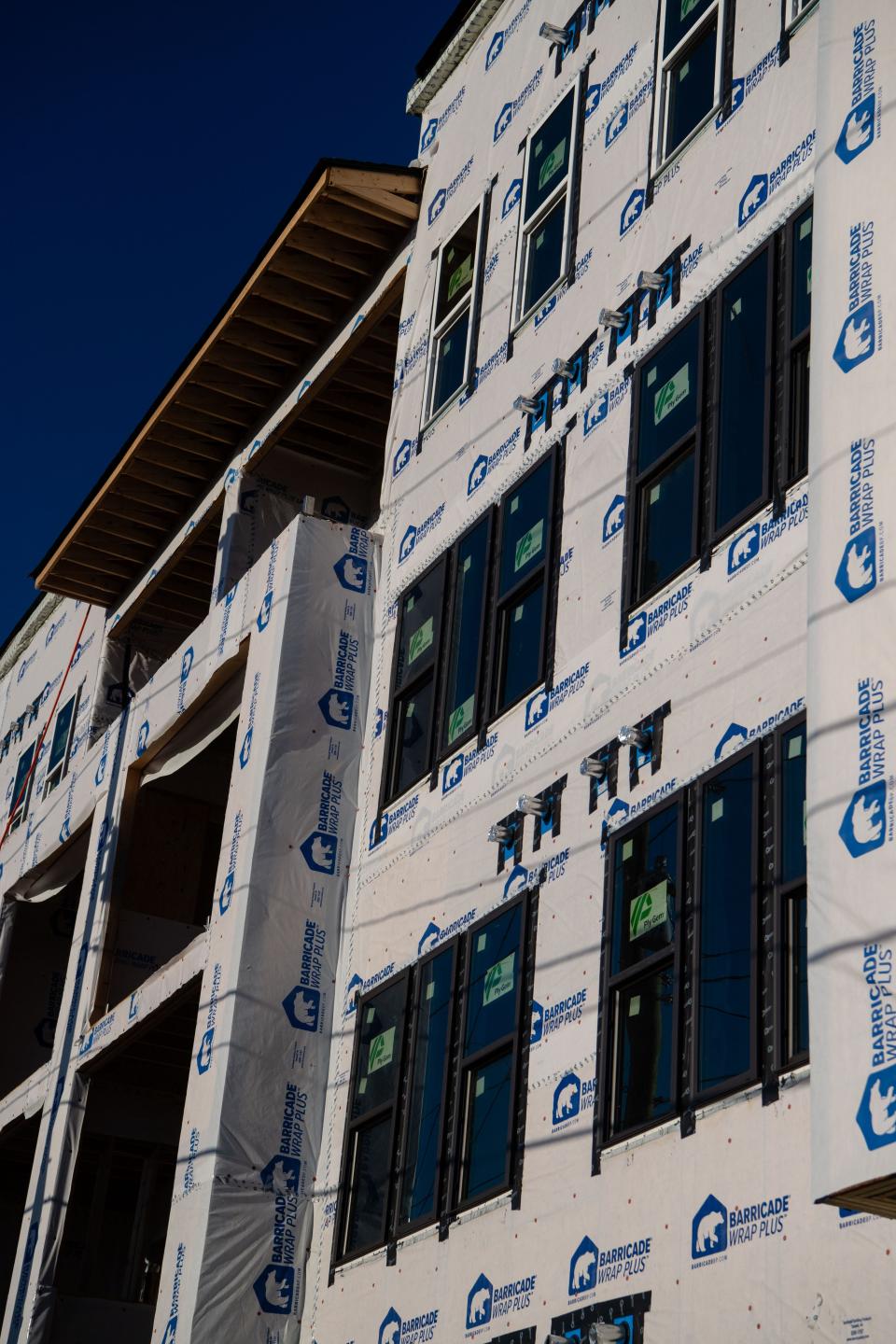Asheville takes 1st look at new affordable housing plan: What comes next?
ASHEVILLE - It's no secret that Asheville's rents are among the highest in the state, its housing market breaking records nearly every quarter, but the city lacks a comprehensive plan to guide affordable housing. That's about to change, officials say.
A new Affordable Housing Plan kicked off last fall through a $146,517 contract with Enterprise Community Partners, funded in part by Dogwood Health Trust. It will direct the use of local funds and resources, and revisit the city's policy and programs — like those that dictate its Housing Trust Fund, Land Use Incentive Grants and Bond dollars.
There are a slate of existing intersecting studies, some generated directly by Asheville neighborhoods, as well as a recent Missing Middle Housing Study, another from Thrive Asheville and the Bowen Report.
Jerah Smith, a program director of Equitable Housing Solutions with Enterprise, told Asheville City Council at a March 26 update that its recommendations would "knit together" with ongoing work, while assessing current needs and setting a direction for the next five to 10 years.

"It's really exciting to see how much alignment is coming together right now," Smith said. "Because oftentimes these plans happen two, three years apart ... it seems like there's really a lot of momentum happening right now."
The city's most recent affordable housing plan was created in 2008 and last updated in 2015.
The new plan will:
Include an updated housing needs assessment, which is imperative given the changes in the market and demographic shifts during the pandemic, according to the city website.
Recommend a set of priorities for programming, funding and new policy directions.
Bring together stakeholders, advocates and community members, engaging them to build a foundation for the plan and the future direction of affordable housing in the city.
Communicate to developers, both nonprofit and for-profit, what the city is looking to achieve.
Make recommendations for program changes in existing programs.
Build a foundation for a future affordable housing bond.
Smith and Bithia Palmer, director of Equitable Housing Solutions with Enterprise, offered their most recent update and input session March 27 in the banquet hall of the Harrah's Cherokee Center in downtown Asheville.
At the meeting, they shared draft priorities, which include specific recommendations intended to help alleviate the city's ongoing housing crisis. The final report will be published in May or June.

What sets Asheville apart?
As Palmer noted, the plan's intention is to center the people who live in Asheville, as well as those who have been displaced. There are limited pathways to homeownership for low- and moderate-income households, and many area transplants have higher incomes.
The perception, she said, is that new developments are created with the needs of new residents in mind. Many existing residents voice fears of displacement.
Norma Baynes, a liaison with the Shiloh Community Association, a historically Black legacy neighborhood, said at the March 27 meeting she is interested in how, amid gentrification, these neighborhoods can remain intact.

Dee Williams, another attendee, pointed to the lasting impacts of urban renewal and the city's declining Black population. In 2000, 20% of Asheville's population was Black. That shrank to 13.4% in 2010 and again to 10.5% in 2020, according to census data.
Among the new plan's priorities are advancing racial equity, including addressing the racial homeownership gap, eliminating racial disparities through a systems approach and using racial equity impact assessments as part of its policy making process.
Smith told the Citizen Times after the meeting that he was struck by the amount of interest in affordable housing they were finding in Asheville.
“There’s a lot of other cities that are facing equally troubling affordable housing crises, but don’t have even close to the amount of supportive players in the ecosystem,” he said.
"It’s not often that a city will do a housing plan, let alone an affordable housing plan, let alone one that centers racial equity."
Palmer said while other cities may be experiencing overall population declines, "Asheville is really unique in how fast it is growing." Though tourism provides jobs, she said, its wages often don't meet the cost of housing.

The presentation estimated Asheville's population — now just over 94,500, according to census estimates — would grow 32% between 2022 and 2050.
A major portion of the city's housing was built before 1970, Palmer said, and much of it does not match the needs of residents in terms of affordability, accessibility, type or size.
What are some recommendations?
Nearly 40 preliminary recommendations were presented at the input session, each nested underneath an overarching "draft policy goal:"
Promote policies and resources that help residents stay and thrive in Asheville.
Preserve existing affordable housing and improve housing quality.
Increase the supply of housing that meets the diverse needs of current and future residents.
Align place-based policies and programs with related city initiatives.
Broaden and strengthen the affordable housing ecosystem and tools.
What's next?
Draft recommendations and a new online survey can be found at ashevillenc.gov/projects/affordable-housing-plan/ in the coming days, said Sasha Vrtunski, the city's affordable housing officer. The survey will be open through April 14.
In May, Enterprise will present again to City Council, with a final report published in the following weeks.
“Everyone is so motivated to effect change," Smith said. "They can feel the crunch … that this affordable housing crisis is putting on the city. Everybody feels it, and everybody wants to help.”
At the meeting's onset, Palmer asked attendees to submit online a brief explanation of why they came that evening. Of the 74 responses, "housing" was the obvious winner, with "affordable," "learn" and "advocacy" close behind.

But Palmer pointed to the smaller, but still present, word: "hope."
“I feel really hopeful just hearing the number of people who are showing up at meetings like this, who talk to us through the process,” she said.
"People, particularly those who are most impacted by this challenge, are working multiple jobs in some cases, or have kids that they're taking care of, or working evening shifts. But people show up and participate, so there's hope just in the people itself, but also thinking about how people are interested in coming together on solutions."
More: Answer Man: Asheville faces highest rent in NC; How much funding for affordable housing?
More: Buncombe County's Ferry Road project OK'd by Asheville council: 645 units, 55% affordable
Sarah Honosky is the city government reporter for the Asheville Citizen Times, part of the USA TODAY Network. News Tips? Email [email protected] or message on Twitter at @slhonosky. Please support local, daily journalism with a subscription to the Citizen Times.
This article originally appeared on Asheville Citizen Times: Asheville gets new affordable housing plan: What's next?
